As Covid turns our lives upside down, what are the biggest residential design trends for 2021? Our recent awakening and collective brush with mortality will change what we place importance on; from the materials we choose, to the design of our living spaces, who we live with, and how we want our spaces to interact with and ultimately fulfil us.
Homes will connect even more with nature, while minimalist decor and open plan living will be shown the door. Out with clean white spaces, and in with tactile havens, nostalgic colours, antiques, and artisan works – the mood for our homes is anything but sterile. And one word will continue to dominate above all….comfort. Find out what that actually looks like, as we adjust the way we live, and the trends that need to go. Our collective experience of lockdown will fundamentally alter the way we live in the future. Read more, ‘9 Design Trends We’ll Be Seeing in The Very Near Future.’
It used to be that our homes were a place for part of our lives. Simply put: many of us weren’t actually in our houses or apartments that much. The coronavirus pandemic changed all this. Now, much of working, socialising, exercising…is from our homes. Things that previously went unnoticed, were suddenly not right and needed fixing as the definition of home changes. Read more, ‘Thes Are The 10 Design Requests People Will Make Post Pandemic.’
The home trends we’re likely to see in 2021 are comfort, practicality, and making your home your sanctuary on every level.
Comfort in all forms is becoming more paramount. When uncertainty abounds, it’s human nature to yearn for a simpler life where nostalgia – which has an incredibly reassuring power – reigns. The importance of comfort, wellness, and sustainability will continue to be a priority. Read more, ’15 Ways The Pandemic Will Impact Interior Design As We Know It.’

When uncertainty abounds, it’s human nature to yearn for a simpler life. 2021 will see an increased interest in residential design that is comfortable, easy and supports our health. Image via Tine K Home.
Trends That Need To Go
As a result of our newfound focus on 24/7 liveability, some previously hot trends are falling fast out of favour. The decline of mid-century modern, once the design choice du jour, continues: “While the mid-century look was very popular, now that people are actually hanging out in their living spaces for hours at a time, there is a strong trend towards furniture that is soft with comfy sofas and chairs that allow you to lounge with ease,” says Timothy Corrigan. Robert McKinley predicts a similar fate for another style: minimalism. “I think minimalism will begin to go by the wayside in 2021,” he says. “As we spend more time in our homes, we need more objects to hold our attention. Read more, ‘How Coronavirus Will Change Our Homes in the Next Decade.’
“Out for 2021… rooms with no purpose, rooms only used for high days and holidays, furniture that has no other function but to make a statement. In 2020 we learnt our lives are for living and need to be lived out in the best way we possibly can.” – Martyn Lawrence Bullard, from Martyn Lawrence Bullard Design.
Needless excess is out, functionality and duality in the home are in.
Comfort is Paramount
What does cocooning, comfort really look like? Think plush, sink-into furniture, chestnut woods, warm colours, overflowing bookshelves (but not the colour-coordinated kind, rather, ones stocked with covers of novels you’ve read and loved). Less mass-produced furniture and more reworking of passed-down family pieces or ones you already own. (There’s nothing more thrilling than giving new life to ancestral pieces.) Fluffy towels, luxurious candles, objets d’art from local artisans rather than e-commerce giants. Essentially: the trend is to embrace what lasts, what’s well made, and what makes you smile.
Repurposing things. Shuffle artwork around. Moving furniture from room to room.
Re-accessorising what you have rather than starting over. Keeping the pieces that have meaning. It will be a case of comfort over the concept. Decorating is back in—colours, textures, a mix of old and new. Read more, ‘Are You A Comfort Addict and Utterly Addicted to Indulgence?’
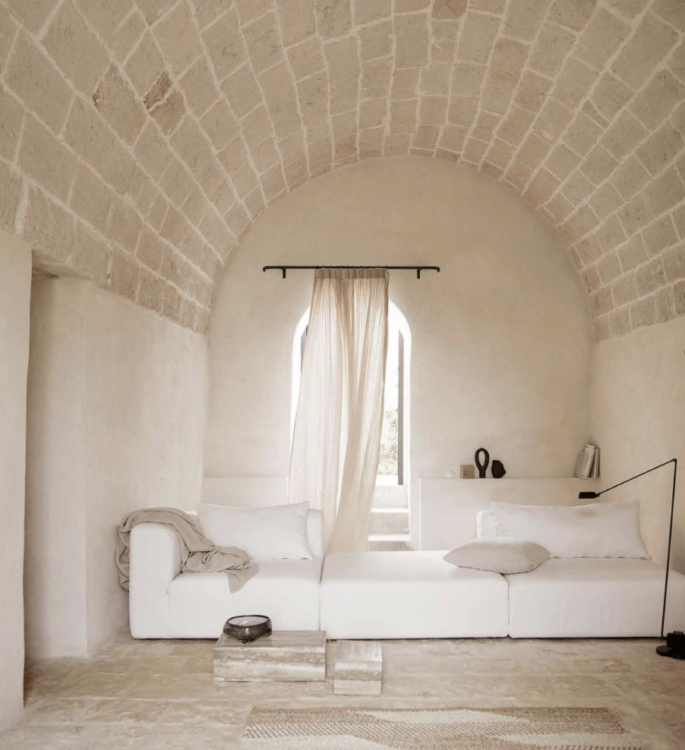
The focus for 2021 interiors is on wellness, comfort and making your home a sanctuary on every level. Image via Tine K Home ‘Slow’ Catalogue 2021, tinekhome.com.au
HERE THEN, ARE THE BIGGEST TRENDS FOR THE YEAR AHEAD:
1970s Colours Are Back
The expected hottest colours for 2021 include emerald, cobalt blue, burnt orange and mustard. We will be painting and decorating our houses in bold colours and earth tones linked to the 1970s this coming year.
The use of colour in design is often a sign of the times as much as of the inhabitants. Jewel tones definitely add luxury and maturity to a palette. As people are indoors more, they seek to embrace the outdoors by using more grounded colours, which evoke a sense of comfort and calm. There also seems to be a subtle shift toward the humbler earth tones, and we believe richer hues will redefine how the whole home feels: comforting, safe and inviting.
“Crisp, clear colours are continuing to grow in popularity with yellows, light blues/turquoises, and greens being used to brighten up spaces and put a smile on your face during these challenging times.” – Timothy Corrigan
“Everyone can be transported through the use of pattern and colour (muted and grounded shades mixed with brighter and more hopeful colours like yellows or bright greens).” – Sheila Bridges
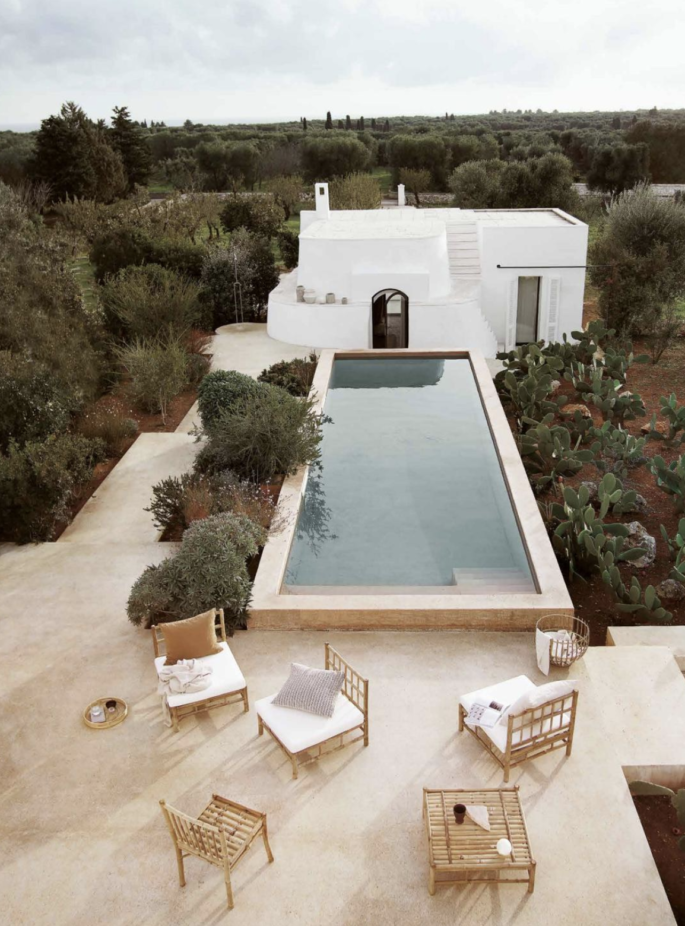
For the home, an unduly stressful year has made relaxing at home even more of a priority with design that focuses on health and wellbeing. Image via Tine K Home
Bringing Nature Indoors
Expect to see strengthening of design trends that harken back to a slower, kinder, and gentler approach to life. We will see small ditsy floral prints on upholstery and wallpaper and a continuation of quieter pastimes including reading books, bicycling, baking, gardening, and picnics. This is a decidedly more feminine trend despite the rise of the nonbinary approach to life. Read more, ‘How To Create An Outdoor Room.’
Floral organic and large-scale patterns are expected to be increasingly popular, along with natural materials like wood and stone. As we spend more of our time in one place, designers are reporting a desire to bring natural aesthetics into the home which remind us of the wider world outside our walls and create a peaceful, soothing atmosphere. Wood is the top predicted material for 2021, at 34 percent, and natural, organic and ditsy floral prints are expected to be the most popular motifs.
Think botanical wallpapers and hand-painted nature-inspired murals, as well as potted plants, trees and vertical gardens.
Designing for Health and Wellness
Prioritizing social distancing measures is a must, as is a focus on wellness and comfort. Our collective brush with mortality has created a desire for things that are authentic, real, natural and that support wellbeing. !st dibs reported its designers noted increased interest in designs that are comfortable and easy, and also designs that support health.. Unsurprisingly, given the climate of this past year, 2021 interior design trends are expected to focus on creating a wellness-conscious environment. For the home, an unduly stressful year has made relaxing at home even more of a priority. Read more, ‘Designing A Healthy Home Is Harder Than You Think.’
The Rise of Virtual Design
Designing projects remotely or virtually was already a common practice in 2020, according to 1st Dibs’ recent trend design survey, with responses showing 41 percent of projects completed this way and 59 percent completed using traditional, in-person methods. When asked about plans for 2021, a whopping 91 percent of designers reported that they planned to integrate virtual services as part of their offerings. This clearly shows that virtual design services will be with us for the foreseeable future, likely remaining in a post-COVID world.
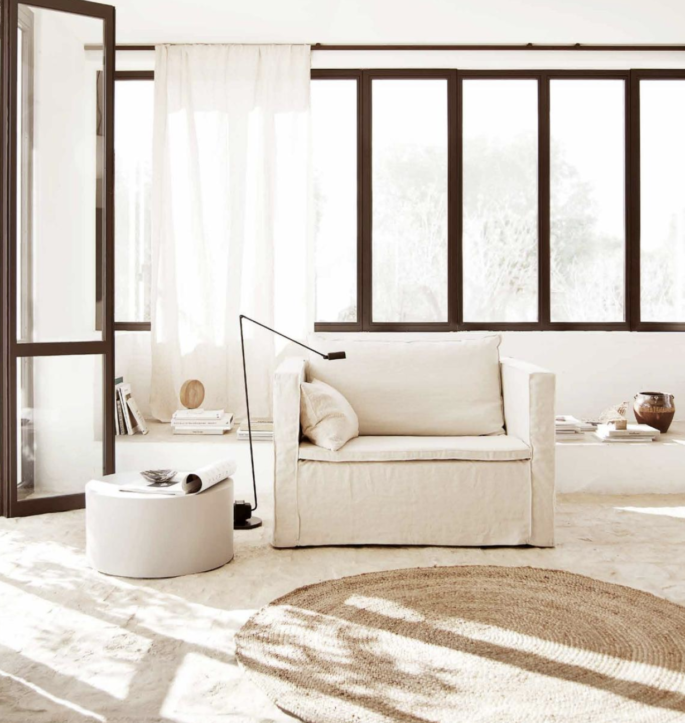
There is a clear trend toward contemporary design, custom work and tactile elements for 2021. Image via Tine K Home
New, Contemporary + Custom Work Is In
When asked which design periods designers expect to employ most frequently in 2021, there was a clear trend toward contemporary design and custom work. Seventy-eight percent reported custom items as their top category, 75 percent reported new and contemporary pieces, and 67 percent selected the 21st century as their top period for 2021.
Interest in Antiques Holds Steady
People are looking at ways of incorporating more history and interest in the modern look. This might mean antiques, inherited items or art. In times of uncertainty, a well-known past is looked at with fondness and longing which is impacting the rising appreciation of antique furniture.
Repurposing, revamping, and refreshing antique furniture and pieces otherwise discarded is motivated by both sustainability and nostalgia.
Results from a recent 1st dibs Trend Survey indicate that interest in antiques will hold steady between this year and next. Forty-nine per cent of designers reported that they sourced from this period in 2020, and an equal percentage reported that they plan to source antiques in 2021, demonstrating the everlasting appeal of these classics with timeless appeal that add history, pedigree and gravitas to any space. Read more, ‘What Are We Buying For Our Homes During the Pandemic.’
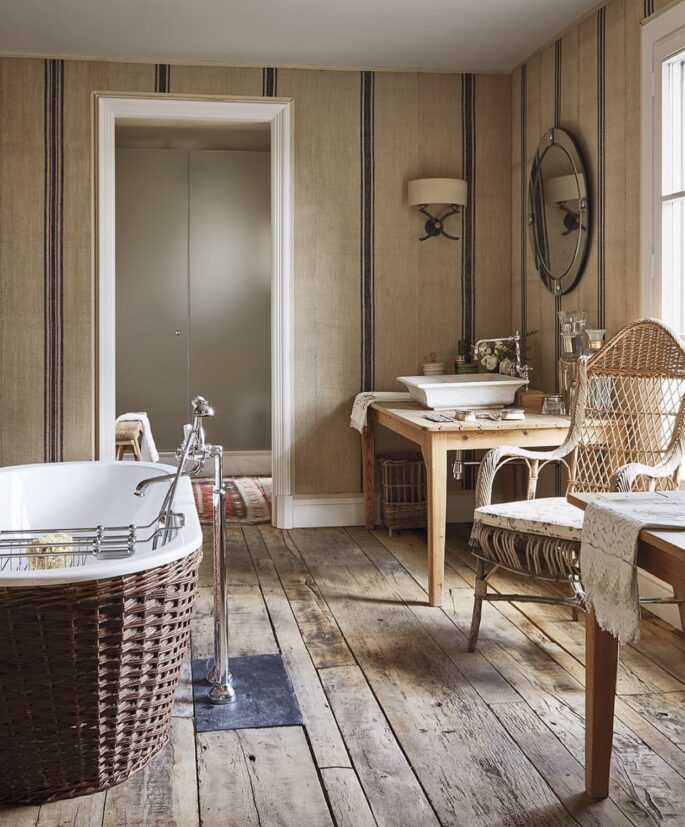
Just as custom work is becoming more attractive, so too are designs from small-scale artisans, as opposed to big brand names. Design by Isabel Lopez-Quesada via @milieaumag.
Increased Interest in Artisan Work
Just as custom work is becoming more attractive, so too are designs from small-scale artisans, as opposed to big brand names.
Sixty-one percent of interior designers in 1st Dibs recent Trends Survey stated that they plan to purchase more items from artisan makers in 2021.
In addition, to the question about which furniture designers, would be most in-demand in 2021, the most frequent response was not a specific name but artisans and local craftsmen as a group. It’s interesting to note that no one furniture designer was chosen at any meaningful level, indicating that consumers may be more interested in quality than name recognition.
According to Robert McKinley, Studio McKinley: “As we spend more time in our homes, we need more objects to hold our attention—all that empty space can be suffocating. I’m not advocating for clutter, however. I’d say that 2021 will be a year of attributing meaning to carefully selected pieces—the year of the craftsperson, the artist, the artisan.” Read more, ‘Affordable Art Exists- Here Is Where To Shop For It Online.’
Furniture Styles Remain Steady
Interest in specific furniture styles has remained steady over the past several years and looks to continue this way into 2021. To the question about which furniture styles they are likely to use in this coming year, the top responses in 1st Dibs 2021 Trends Survey were contemporary, (31 per cent), mid-century modern, (24 per cent) and Art Deco (22 per cent). Percentages have been similar for these top styles since 2017, demonstrating that the mid-century-modern mega-trend isn’t going away any time soon.

Design: McAlpine House.
Enveloping furnishings
The experts agree that interior design will be shying away from sharp edges for the time being. “Shapes will continue to be curvilinear and envelope us. We crave this feeling of comfort, like a warm hug from a trusted friend. The rise of curvaceous sofas and chairs will continue, with the arms wrapping even further around.”
Padded, upholstered, and warm items—large and small—will be key to the home.
The sofa is regaining importance as a place of not just for relaxing but also working, sleeping, perhaps eating, and more. In general, spurred by the work-from-home lifestyle shift, seats previously designed for the office are now addressing the residential market by embracing softer looks via upholstery, cushions, and padding.
Refined Finishes Are on the Rise
In addition to wood and natural materials, refined, colder finishes are also predicted to be on the rise in 2021. When designers were asked which materials and finishes we are likely to see more of next year, top results included stone, (16 percent), metal (15 percent) and brass (12 percent).
Tiles and Bricks as the New Vehicles for Self-Expression
Where once experimentation with colour and texture in a home was primarily through paint colour and application, it is now moving onto tiles – and bricks – with incredible results, according to Houzz’s 2021 trend survey.
Tiles: The rise of handmade tiles from Morocco as well as recent collaborations between manufacturers and artists – including Mutina with artist Nathalie Du Pasquier and Patricia Urquiola (among others) have elevated tiles into an art form. Tiles are fun and can add an incredible amount of energy and character to a space for a relatively small investment. The key is investing in good-quality tiles. You are effectively buying a work of art for your wall or floor.
Bricks: Bricks are back. People are finally starting to see the value in investing in bricks as beautiful building materials for the long term. In countries like the Netherlands, housing is built almost entirely of brick. Bricks bring character, texture, scale and warmth to both interiors and exteriors of buildings.
Even better, reusing old bricks is a win-win.
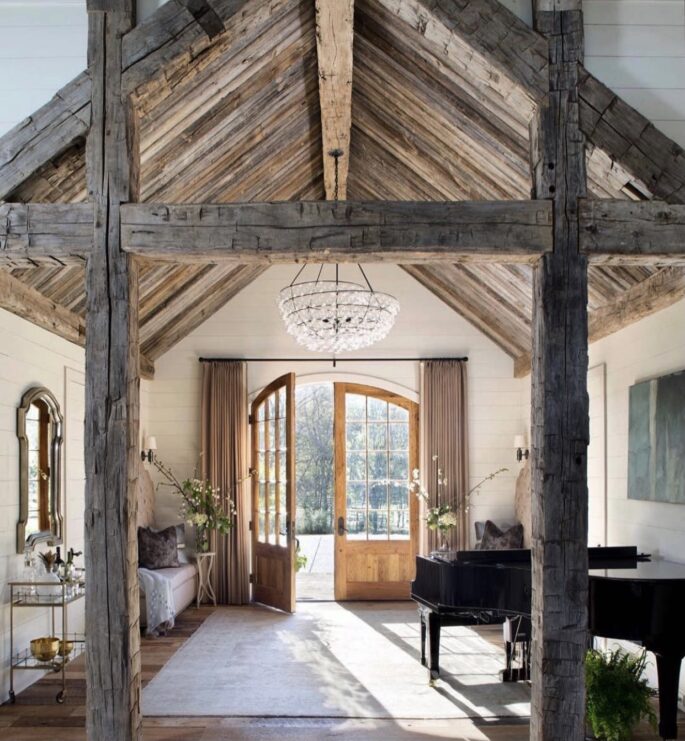
How to optimise space within our homes is more critical than ever such as this incredible design in Tennessee by Post 31 Interiors. Photo: Emily Minton Redfield.
Flexible Living Spaces Are In Demand
People’s mindsets are shifting. The ‘big is good’ philosophy and a fundamental belief in floorplans that can’t change and grow with a family will be revisited. The future is about repurposing and reinventing; building for the long term, not just for tomorrow.
Open-plan living has its benefits but how to optimise space within our homes is more critical than ever.
Our houses (and apartments) simply need to be designed to be more adaptable to provide opportunity for quiet spaces. For example, the biggest reported trend in 2020 was a renewed interest in home offices and flexible workspaces. Sixty-six percent of 1st Dibs designers reported home offices as the dominant expected project in 2021, up 38 percentage points from last year’s report. In addition, 1st Dibs saw a 16 percentage point increase in projected interest in home gym design for 2021 as people continue to prioritise at-home wellness.
The Integration of Natural Colours
In New Zealand, Laura Lynn Johnston, editor of Habitat by Resene, says that our future colour choices will also be informed by our emotional needs for security and calm. “More than ever, there is a desire for soothing and calming spaces in our homes, but we also need spaces that are stimulating to spend time in – much more time, perhaps, than we might be used to.”
“Nature will continue to be a source of inspiration for colour, and earthy colours (yes, that does include brown) will continue to underpin many palettes. Warm to the eye as much as to the hand, palettes of organic, natural colours will be important to have a nourishing effect. The focus will be on nuances of greens, blues, and earthy pigments such as terracotta.
Look out for the rise of colours like deep, nourishing greens with a blue cast akin to malachite—that remind us of getting off the grid and being immersed in nature. Herbal and vegetal casts of greens inspired by spices, vegetables, and herbs will also take off. But it won’t be all soothing neutrals and demure mid-tones – Brights are another factor because they are so joyful. We won’t call on them for an entire room but will add them as accents.
A key colour is ultramarine, a rich and intense cobalt hue.
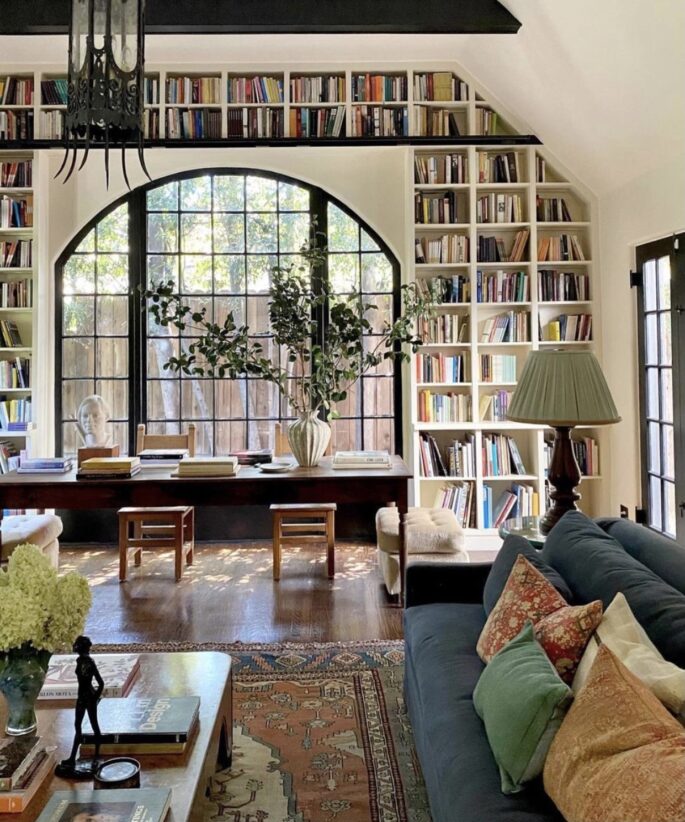
Comfort is key in 2021: with soulmate, sink-into sofas, chestnut woods, warm colours, and overflowing bookshelves (but not the colour-coordinated kind, rather, ones stocked with covers of novels you’ve read and loved). Gillian Lawlee’s Los Angeles residence via @my.life.in.colour
Nature As Saviour
Designing for wellbeing – green roofs, internal courtyards and external sightlines – is growing in importance. Increasingly, architecture and interiors are looking for interesting ways to integrate nature throughout a home. Read more, ‘Key Outdoor Trends To Make The Most Out of Your Garden All Year.’
Connection with nature is essential to wellbeing.
The garden is increasingly becoming a central part of the design-making process – with the two working together and be seamlessly integrated.
The Rise of Antibacterial Materials and Biodesign
The approach to architecture that seeks to connect building occupants more closely to nature, is very much in the conversation at the moment. If there’s one thing the pandemic has burned into our brains, it’s the importance of hygiene. And just as sanitary practices have become a life-saving virtue, a rise in automatic washbasins, touch-less flushing systems, and infra-red sensors in our bathrooms will meet our desire to reduce excessive contact with surfaces.
There will be greater demand for surface coatings that are bacteriostatic (capable of inhibiting the growth or reproduction of bacteria). Trend forecaster for London-based firm Scarlet Opus, Victoria Redshaw, believes that antimicrobial metals (which kill microbes or stops their growth) will also be in demand. Copper and its alloys, brass and bronze, fulfil this criteria so expect to see more tapware, and kitchen and bathroom fixtures such as sinks and splashbacks, made from these
The Importance of Durability and Details
With everyone spending more time at home, there is a renewed emphasis on rooms that not only look good but can live up to increased use. Durability will continue to be more important and we will see a rise in using outdoor materials inside the home: there are so many great outdoor fabric options that allow you to make a mess and not worry about the clean-up, without having to sacrifice beauty.
Most of us used to just sleep and shower in our spaces, but now people are really investing more time, money and energy into decor details, bringing meaningful small goods and statement pieces into their homes.
We’re paying attention to everything from what we’re drinking water out of, to the kind of bath towels we use.
Finally, Designer Outlook for 2021
With all the tumult of 2020, it’s heartening to note that the majority of designers feel positive about the prospects of the design industry during COVID. The ability to design virtually and find quality items online means designers still have access to the resources they need. In fact, 73 percent reported a shift to buying online instead of in stores or galleries in 2020, and 65 percent expect to continue buying online in 2021.
Interior designers and architects certainly faced their fair share of challenges last year, with the top three issues reported being delayed procurement and delivery timelines, project delays or cancellations and lack of product availability. However, many also noted that the pandemic has made people more aware of the need for good design and that designers have a role to play in solving some of the critical issues concerning the way we live and work — at home, in the office, and outdoors.
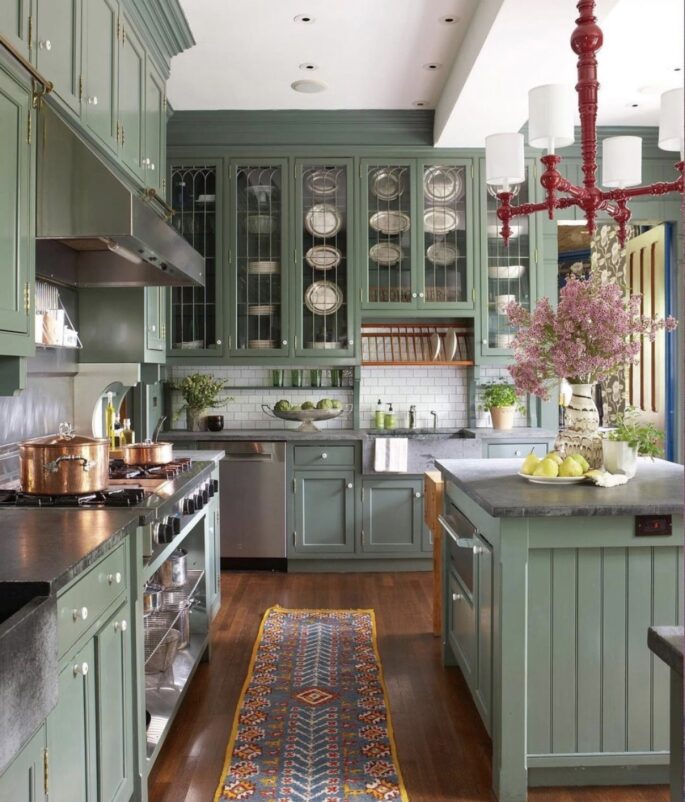
Future colour choices will also be informed by our emotional needs for security and calm. More than ever, there is a desire for soothing and calming spaces in our homes, but we also need spaces that are stimulating to spend time in – much more time, perhaps, than we might be used to. Design: rrinteriors.


